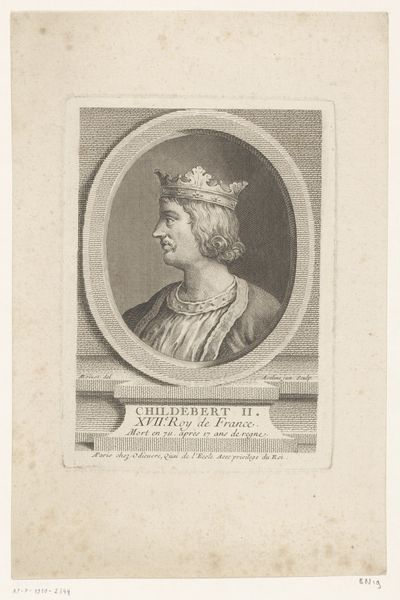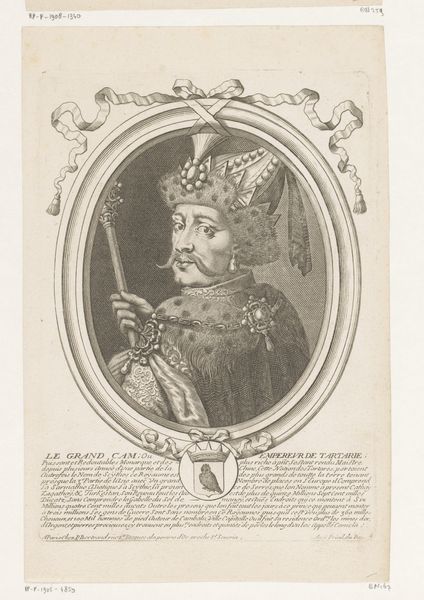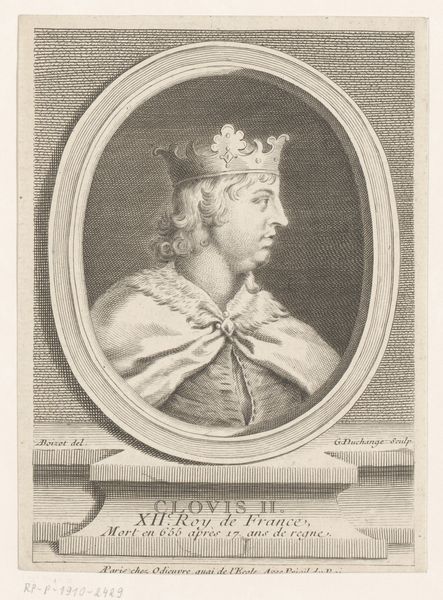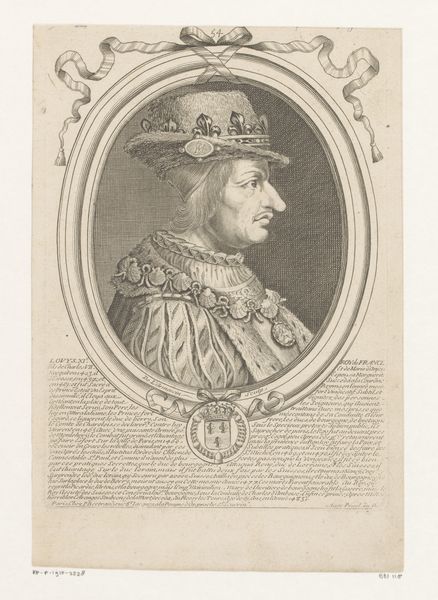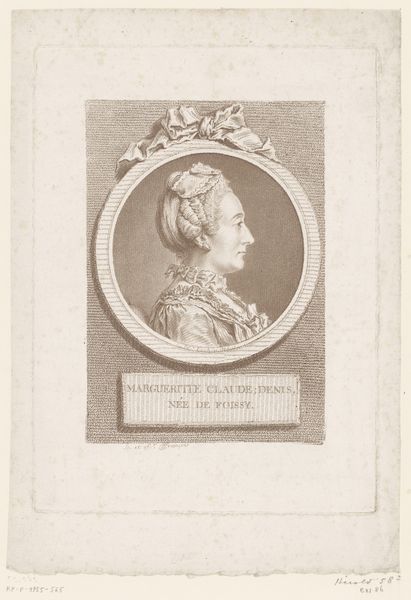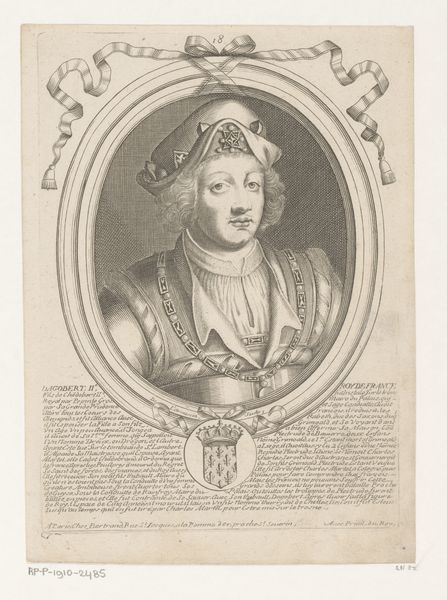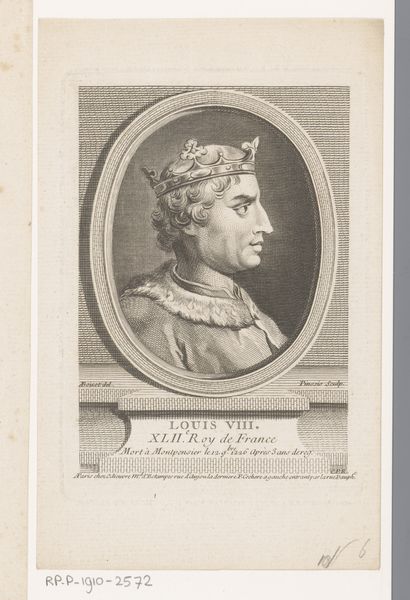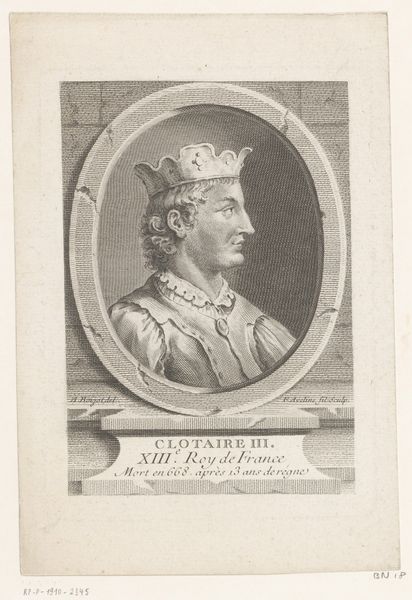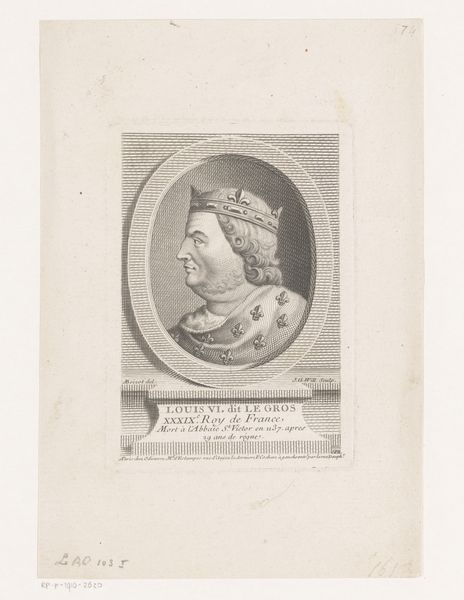
print, engraving
#
portrait
#
aged paper
#
baroque
#
yellowing background
# print
#
old engraving style
#
history-painting
#
academic-art
#
engraving
Dimensions: height 152 mm, width 112 mm
Copyright: Rijks Museum: Open Domain
Editor: This is a print entitled "Portret van Lodewijk X" by Sébastien Pinssio, dating from 1755-1765. It has a rather stately, formal feel, especially with that ornate oval frame around the king’s profile. The lines are so precise. What do you see in this piece from a formalist perspective? Curator: Initially, one observes a carefully constructed interplay of line and form. Note how the oval frame both contains and emphasizes the king's profile. Pinssio's use of engraving allows for incredible detail. Observe the texture in the fur collar, achieved through dense cross-hatching versus the smooth planes of the king’s face, defined with sparse lines. Editor: Yes, the texture really stands out. Is that contrast intentional? Curator: Undoubtedly. The juxtaposition creates a visual hierarchy, drawing the eye to the subject's face first. Furthermore, the background, rendered with delicate parallel lines, provides a neutral space that accentuates the portrait. Semiotically, this is a reduction to form; King Louis is essentially translated into line and shape, his identity secondary to his artistic representation. How does the text at the bottom function, within the structural dynamic of the work? Editor: I see... the text acts almost like a foundation, grounding the portrait. I hadn't thought about it like that, as a deliberate part of the composition. Curator: Precisely. The work showcases a mastery of technique, where meaning arises primarily from the intrinsic qualities of the engraving itself. It's less about *who* he was, and more about *how* he is rendered. Editor: That’s fascinating. I’ve definitely learned to appreciate the power of purely visual analysis, stepping away from historical context, for a moment at least. Curator: Agreed. Deconstructing visual components offers unexpected insights, allowing one to understand art’s aesthetic qualities at a more profound level.
Comments
No comments
Be the first to comment and join the conversation on the ultimate creative platform.

